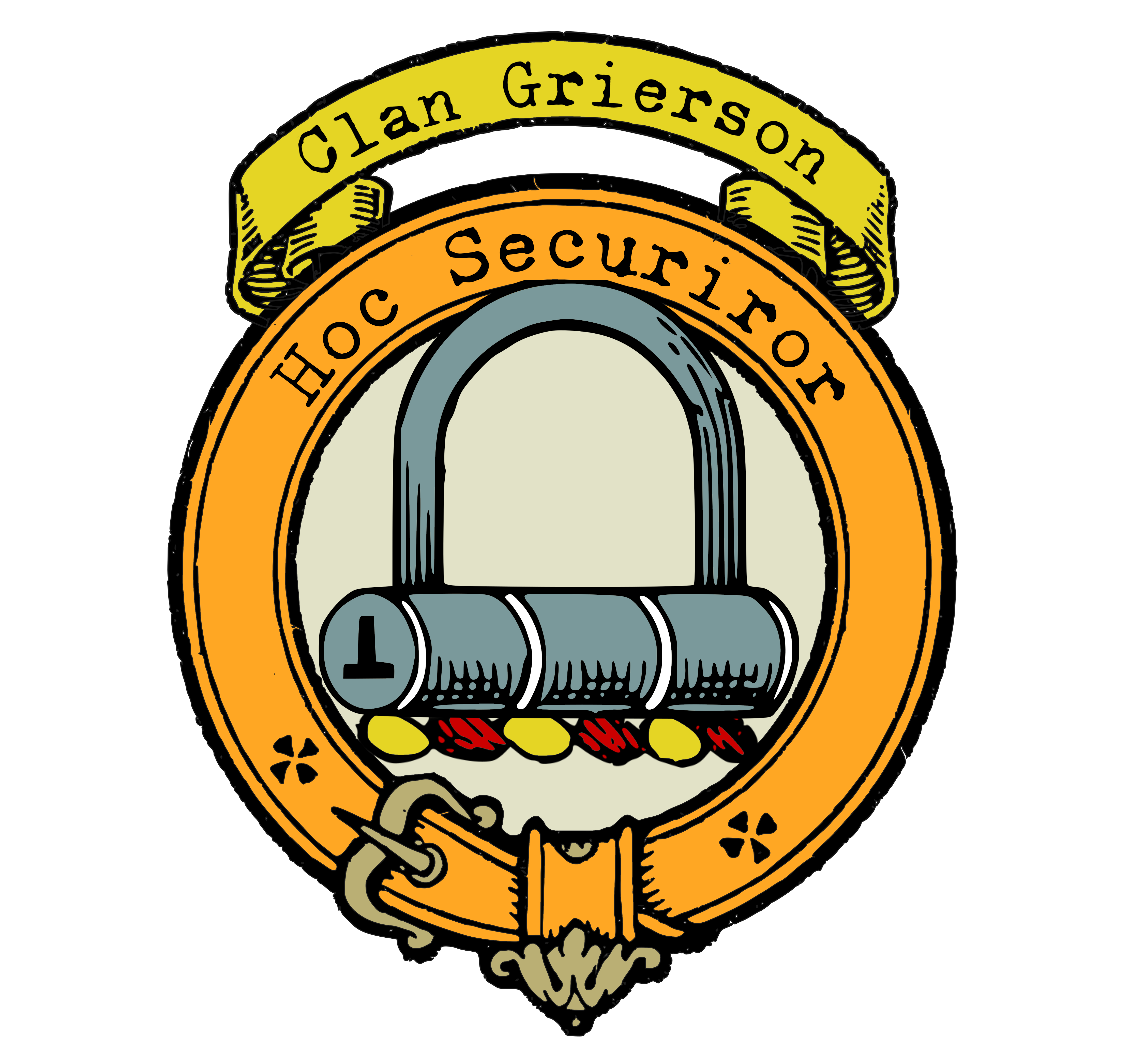Grierson Clan
|
|
CREST: A fetterlock Argent MOTTO: Hoc securior TRANSLATION: More secure by this |
| The Scottish clan Grierson has a rich and varied history, stretching back to the Middle Ages. The name Grierson comes from the Greek word for “vigilant,” through its Latin translation “fregorius.” This name was particularly popular among the clergy in the Middle Ages.
The Griersons obtained the lands of Lag, which became the principal seat of the family, around 1408. The family’s early fortunes were secured by their royal connections, as Gilbert Grierson was described as “armor bearer” to the Earl of Douglas in a charter of 1420. Gilbert had married Janet, daughter of Sir Simon Glendinning, whose mother was Mary Douglas, daughter of the fourth Earl of Douglas and Princess Margaret. Vedast Grierson of Lag built a strong tower on his lands in 1460. His son, Roger, obtained a royal charter in 1473 confirming his lands. He was killed at the Battle of Sauchieburn in 1488. The Lairds of Lag also followed James IV to the fateful field of Flodden in September 1513, where they met the same fate as much of the flower of Scottish chivalry. The Griersons declared for the infant James VI during the confrontation between his mother, Queen Mary, and the Protestant lords who held the child. Sir William Grierson of Lag was closely allied to the powerful Maxwell family, and he joined forces with them against the Johnstones of Annandale at the Battle of Dryfe Sands in 1593. He was knighted by James VI around 1608. Sir Robert Grierson succeeded his father, Sir William, and was to become the first Baronet of Lag. Throughout the south and west of Scotland, it was this Laird of Lag that made the name Grierson synonymous with terror and death in his fierce persecution of the Covenanters during the reign of James VII. He was created a baronet of Nova Scotia in March 1685 and in the same year surprised an illegal Covenanter service at Kirkconnell. In the struggle that ensued, most of the worshippers were killed, and Lag was said to have refused to give them a decent burial. Whether the story was true or not, it quickly spread, earning Grierson his feared reputation. One of the Covenanter Martyrs was John Bell of Whiteside, whose stepfather was Viscount Kenmure. Lord Kenmure was with Graham of Claverhouse in Kirkcudbright when they encountered Sir Robert, and a quarrel broke out. Kenmure drew his sword and was only dissuaded from fighting a duel by the intervention of Claverhouse. The Griersons did not support the overthrow of James VII and considered William and Mary to be usurpers. Sir Robert Grierson was arrested in 1689 and held prisoner for some months until a substantial cash surety was paid. He was imprisoned on two subsequent occasions, being at one point accused of a conspiracy to counterfeit money. He was cleared of all allegations, but his ordeal had broken his health, and he died in 1736. The Griersons lost much of their lands by the time of the First World War, although the ruins of the Tower of Lag still stand to this day. However, the Grierson name has continued to thrive. Sir George Agraham Grierson was a distinguished linguist who devoted much of his life to the study of the dialects of the Indian sub-continent. Dr. John Grierson, a pioneer of the documentary film movement, was one of the most influential figures in the development of documentary filmmaking in the 20th century. |
|
|
|
|
Citations:
|
|

Purchase @ Redbubble
Purchase @ Amazon.com
Purchase @ Amazon.co.uk

